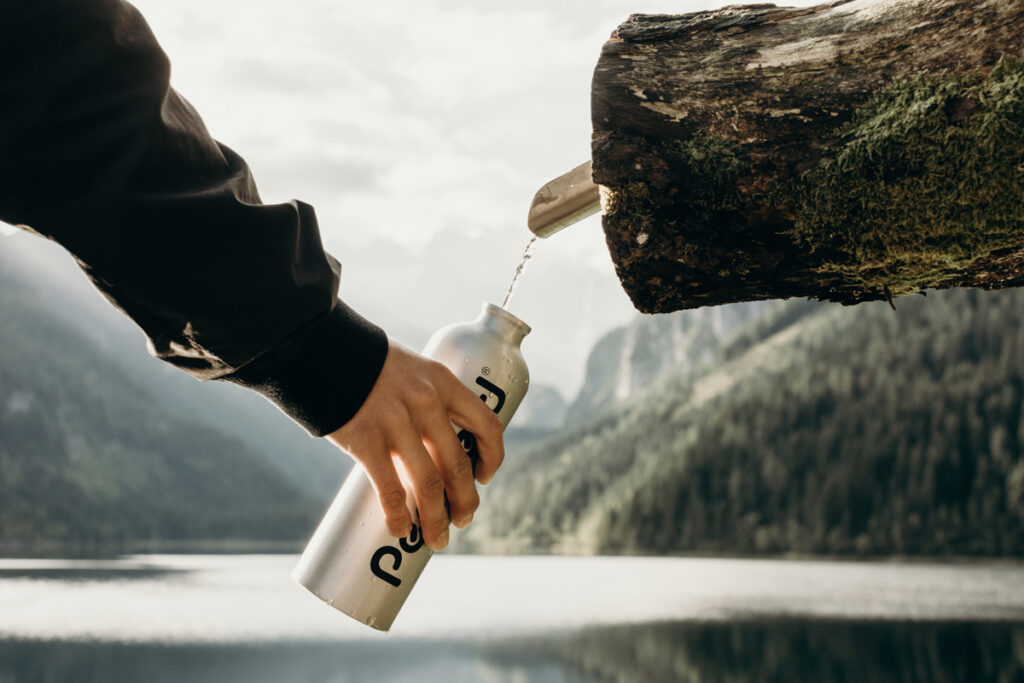Phone
+1-650-666-095
Contact E-mail
[email protected]
Address
16192 Coastal Hwy, Lewes, DE 19958-3608
Camping Hydration: Essentials And Tips To Stay Hydrated


Hydration is a basic human need, and we all require water to survive, but it’s even more critical when hiking or camping. These activities move us far from home, where getting hold of drinkable tap water can be a challenge, so extra hydration measures need to be taken to maintain our bodies’ water balance for our system to function optimally.
In addition to being far away from our usual water supplies, we’re also out in the sun doing physical activities. These are recipes for thirst no matter who you are, so staying hydrated becomes even more important.


Luckily, hydration is one of the things covered in any hiking for beginners courses, and it’s not that hard to learn. Plus, we’ve found some simple tips and hacks that make it easy to stay hydrated when you’re in the great outdoors so that you don’t fall prey to the severe consequences of dehydration.
The Importance Of Safety And Hydration
We all need a lot of water daily, even when we’re not off on an outdoor adventure, so hydration is important to learn. There are serious consequences that can occur when we go without water, and add to those the already dangerous consequences that can happen when we’re in the wilderness; you start to see why it’s so important.


The recommended guidelines for water intake vary slightly depending on age and weight, but when it comes to camping and hiking hydration, it’s better to go slightly above. On average, we should aim for over two liters a day or eight 8-ounce glasses, especially when working up a sweat outside.
In addition to understanding the human body and its requirements for water intake, we need to know about water safety. Many different bacteria live in water, which can be harmful and even fatal when not filtered and cleaned correctly.
There are a few ways you can purify water while you’re outdoors. Boiling on a stove, personal portable water filters, water purification tablets, and pump water filters are just a few options to consider before camping.
Different Methods Of Hydration When Camping And Hiking
Being outdoors means you must get creative when hitting your daily water intake. These are just a few common methods for drinking water used by those who love hiking and camping.


Freshwater Collection
There may be access to freshwater sources depending on where you’re going. You’ll need to use some water filters for purifying, as even if the water looks clean, it can still harbor bacteria.


Hydration Backpack
A hydration backpack such as the KAMUI Hydration Backpack is a hands-free water storage system that fits a bladder on the main pocket. It comes with a drinking tube to meet your mouth for easy access. On the other end of the hose is a bite valve; all you need to do is bite down on it if you need a drink.


This feature will likely make you drink more because you don’t have to exert much effort or rummage through your pack to have a sip.
Additionally, the KAMUI Hydration backpack is built with chest and waist straps to keep it in place when performing any outdoor activity, such as camping, bike riding, running, hiking, mountaineering, kayaking, skiing, snowboarding, etc.
Bottled Water
Depending on how you’re camping, you may be able to bring along enough bottled water to keep you hydrated for the entire trip. You could also opt for your regular reusable water bottle as it’s one way to curb plastic waste. Make it functional by holding it with a carrier to quickly grab a drink when thirsty.


Campground Amenities
When staying at a campsite, check out what amenities they offer. Some camping grounds will have access to suitable drinking water. Otherwise, you must purify or boil it to be safe to ingest.


Tips For Staying Hydrated When Camping
If you need extra pointers on staying hydrated when camping, take some advice from experienced campers. Have a few of these hydration tips up your sleeve to avoid dehydration when you’re out in the wilderness.


Emergency Rainwater
Knowing how to collect rainwater is helpful in a survival situation. Hang up an aluminum safety blanket so that it’s spread out and able to catch water. Pour what you’ve collected into a spare bucket or container each time it fills up.
Hydration Bladder Versatility
Not only are hydration bladders great at quenching your thirst but they also make a great shower. Hang one over a tree, and you can instantly get a bath even when a campsite lacks amenities.


Portable Water Filter
Purchase a portable water filter as a backup; it will store neatly in your pack and be there when needed. You never know when supplies could run out even if you have enough water.


Scavenging
If you’re out of water and need hydration, some things you can eat in the wild will help. Berries, cacti, and green coconuts are just a few foods that will hydrate you, but you need to know which ones are safe to eat first.


Hydrating Foods
Pack some foods with hydrating powers, rather than salty or sugary snacks that can make you thirstier. Cucumbers, lemons, spinach, and all melons are great for staying hydrated.
An Essential Part Of Outdoor Survival
Water is the most important part of your camping or hiking checklist to tick off, so make sure you give it the attention it deserves. It would help to always plan your water intake based on your planned journey. Add extra rations in case an emergency should arise.


Hydration is essential to our health and well-being, but this need for water becomes even more serious when we venture into the wilderness. Any good hiker or camper understands just how precious water will be to their survival, and usually, it employs a range of methods or tactics to ensure they stay hydrated.
Resources:


